
Wire Rope Mesh Net Factory Sale Stainless Steel Wire Rope Mesh Net/flexible Stainless Steel Rope Mesh/zoo Mesh

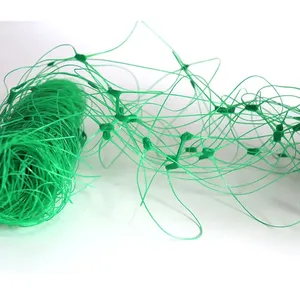
OEM/ODM Plastic Polypropylene Trellis Support Plant Climbing Net Vegetable Support Netting Garden Net Mesh Trellis Netting Roll





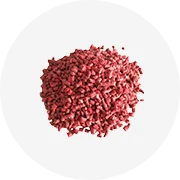


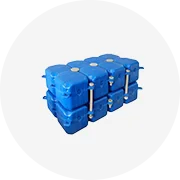
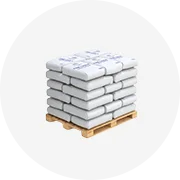

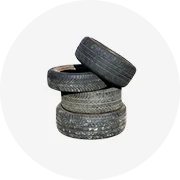
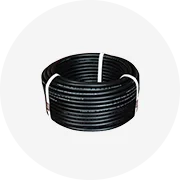

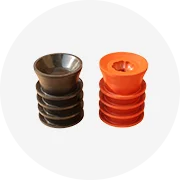
In the expansive realm of the maritime sector, marine netting is a critical element, indispensable for a host of uses from protecting ships to the nuanced tasks of fishing. This netting transcends its role as a mere barrier, serving as a multifaceted instrument engineered to endure the rigors of the sea.
Exploring the types of marine netting reveals a variety of configurations, each customized for particular nautical purposes. Trawl nets, with their intricately woven knots, are crafted for fish capture, while the sturdy lattice of cargo nets ensures the safekeeping of goods aboard vessels. Trawl nets are optimized to glide through water with minimal resistance and maximize harvest, whereas cargo nets are designed with a balance of mesh size to provide both flexibility and strength, capable of bearing substantial loads without compromise. The design nuances of each net type are a direct reflection of the demands they meet within the marine milieu.
The structure of marine netting is an elaborate network of interlinked parts, each essential to its function. A fishing net, for instance, might incorporate floats and weights to manage its submersion and placement in the ocean. The netting is typically organized into panels, connected by robust knots that preserve its integrity under strain. For protective netting, such as that used on fenders, the design aims to evenly disperse impact forces, with reinforced borders and secure attachment points to ships. Grasping the operational harmony of these elements is key to enhancing the netting's efficacy and durability.
The selection of materials for marine netting is paramount, with each material offering distinct attributes suited to the net's intended function. Nylon is prized for its flexibility and tensile strength, making it suitable for fishing nets that must absorb sudden stresses. Polyester, known for its high resistance to wear and minimal stretch, is perfect for nets that demand shape retention. Polyethylene, valued for its lightness and buoyancy, is frequently chosen for surface nets in aquaculture. These materials are chosen not only for their mechanical virtues but also for their resilience to ultraviolet light and corrosion, ensuring reliable performance over time in marine settings.
Marine netting is employed across diverse segments of the maritime industry, each deriving advantage from its distinctive qualities. In the realm of commercial fishing, nets are fundamental to the process, influencing both the yield's efficiency and its sustainability. Within the shipping sector, cargo nets are vital for securing freight on decks, averting loss and damage during voyages. Regarding marine safety, netting is utilized to encircle swimming zones or to shield marine fauna from perilous areas. Each use not only showcases the adaptability of marine netting but also highlights its significance in generating business value and bolstering maritime safety.
The functions of marine netting are as varied as the waters they navigate. Engineered for specific roles, these nets can do anything from capturing minuscule plankton for scientific studies to safeguarding hefty cargo on merchant ships. The functionality of marine netting mirrors its design, be it the delicate mesh for plankton sampling or the robust netting designed for the challenges of deep-sea trawling.
The features of marine netting distinguish it in a competitive marketplace. For example, the application of anti-fouling treatments bolsters the net's defense against biological accumulation, a key advantage for nets in prolonged use. The integration of RFID technology in commercial fishing nets for monitoring and stock management is another attribute that enhances the product's value. These unique selling points not only differentiate the netting from rivals but also deliver measurable benefits to users, such as lower upkeep costs and better asset oversight.
The benefits of utilizing marine netting are numerous. By offering a dependable method for capture or containment, nets contribute to the security and productivity of maritime activities. They also aid in environmental preservation, as certain designs of netting are instrumental in reducing unintended catch, thus fostering responsible fishing practices. The advantages of employing high-caliber marine netting are manifest in the heightened efficiency and diminished operational hazards for enterprises that depend on these tools.
Effective use of marine netting requires an appreciation of its capabilities and constraints. Deploying a fishing net, for example, necessitates knowledge of the targeted species and the aquatic environment. Similarly, maintaining the netting involves routine checks for wear, thorough cleaning to avert biofouling, and storage that preserves the material's quality. Adhering to these protocols ensures the netting's reliability as an asset.
Selecting the appropriate marine netting entails evaluating aspects such as the specific application, environmental conditions, and the physical demands of the task at hand. Installation, conversely, demands a comprehensive understanding of the netting's framework and anchorage points. For instance, fitting netting for a fender system requires affixing it in a manner that accommodates impact absorption without inflicting harm to the net or the ship.
The environmental repercussions of employing marine netting are a significant concern within the industry. Conscientious producers and users strive to mitigate adverse effects by selecting materials that are less detrimental to oceanic ecosystems and by ensuring that nets are properly maintained and disposed of to avoid their transformation into marine debris, which poses a threat to sea life.
Indeed, marine netting can be extensively customized to fulfill the particular needs of vessels. Through techniques such as cutting and shaping, netting can be adapted in dimensions, form, and material composition to meet the diverse demands of various vessels, whether for cargo retention, fender protection, or other specialized uses.
Marine netting plays a significant role in enhancing safety and efficiency within maritime operations. It serves as a protective shield, mitigating damage to ships and freight, and in fishing ventures, it improves the effectiveness of harvesting. By guaranteeing the nets' quality and proper application, they become invaluable components in the marine industry.